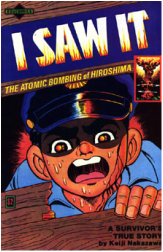
It's been a gratifying and invigorating first week in the new summertime version of English 333. I'm working with (now that the dust has cleared) twenty-one students, which is down from our usual Fall/Spring number of about thirty-five. This week saw the launch of our Moodle site and syllabus, discussion of these things in class, and analysis of several comics, including our first major reading, Keiji Nakazawa's memoir I Saw It (1972; trans. 1982). We had two class sessions, on Tuesday the 26th and Thursday the 28th. The roster settled, I gave out tons of handouts, most everyone got scheduled for their discussion leading dates, and we all started to get to know each other. We filled a Moodle forum with conversation about Nakazawa, which led to lively discussion on Thursday, and I gave out the first cartooning homework based on Ivan Brunetti's textbook Cartooning: Philosophy and Practice (2011).
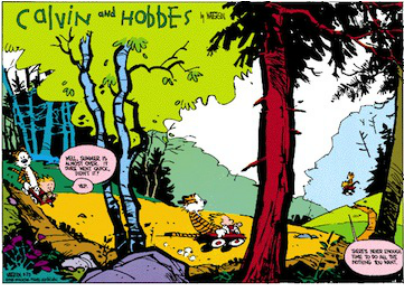
On our first day, Tuesday, we began with what will be a custom for us, the drawing of attendance cards, that is, cartoon self-portraits on index cards (an idea I lifted from Lynda Barry's splendid book about teaching, Syllabus). I then dove into a Pecha Kucha-style lightning talk designed to introduce (or reintroduce) students to the comics world. From there, students took turns introducing one another: I asked everyone to supply a dialogue balloon for a classmate's self-portrait, and then to interview that person and tell us briefly about them). We then analyzed, at length, a classic Calvin and Hobbes Sunday by Bill Watterson, from August 1988 (the same one I discuss in my first book, Alternative Comics). That led to analysis of the following classic Cul de Sac Sunday by Richard Thompson, from 2007:
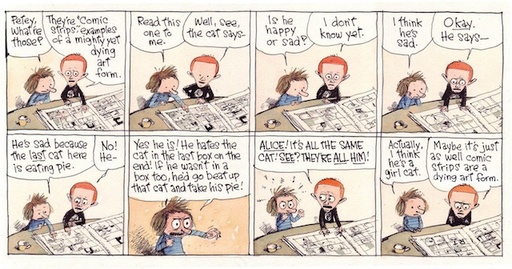
This meta-strip seems to lend itself to analysis of the form (though of course there's always the inevitable danger of breaking the butterfly of art on the wheel of criticism, sigh). I presented the class with a "diagrammed" version of the Cul de Sac strip, as well as a number of other diagrams of the comics page, including examples from the books Drawing Words & Writing Pictures by Jessica Abel and Matt Madden (2008) and Panel Discussions: Design in Sequential Art Storytelling by Durwin Talon (2003) as well as self-made ones like this:
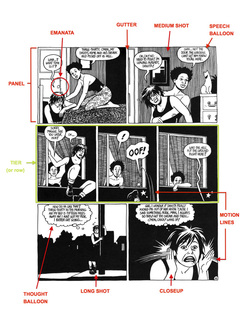
A classic mid-1980s Love & Rockets page, taken from one of our required books, Jaime Hernandez's The Girl from H.O.P.P.E.R.S. (2007). Ugly annotations by CH.
I also shared Talon's glossary of comics terms, and gave out a self-made handout I call The Comics Toolkit, which is basically the précis for a textbook I hope to write in the next few years. All of this was by way of equipping my students with some basic formalist terms they can use throughout the course.
On Thursday, besides the usual attendance cards and other icebreaking stuff, we discussed the syllabus somewhat, particularly the Moodling requirements. Then we delved into I Saw It, building on the online discussion of the previous two days. After a bit I asked the class to divide up into four groups so that each could discuss a particular question about I Saw It and report back to us. (To break the class into groups, I used randomly distributed panels from comics pages that I had cut up, jigsaw-style, and asked students to group with other students who had panels from the same page. They had to reassemble the page, so to speak; that's how we formed the four groups.) The four questions I pitched were:
- How does the style of I Saw It affect your response to the subject matter?
- Is I Saw It a children's comic? Why or why not?
- Why do you think I Saw It is framed by thoughts of Keiji's mother?
- What is the significance of cremation in I Saw It?
We discussed these questions, in some cases perhaps without consensus but with many thought-provoking observations (I would have liked to debate the question about children more vigorously!). I tried to tie in the discussion to the Toolkit introduced earlier. We also discussed issues such as numbing or desensitization, PTSD, and whether I Saw It is an anti-American text. I ended with a slideshow designed to contextualize Nakazawa (and postwar manga generally), partly based on one kindly given to me by I Saw It publisher Leonard Rifas. Wish we could have spent at least another hour with I Saw It!
(Interestingly, one member of our class is an international student from Japan, who remembers reading I Saw It as a required school text when she was ten. Good to hear about Nakazawa's work and reputation from that angle!)
What a week! The readings for next Tuesday are the first four "weeks" of Brunetti's syllabus-in-book-form, Cartooning, alongside a selection of Peanuts strips by Charles Schulz from the 1950s and 60s (including the first week of Peanuts ever, from October 1950, the introduction of Lucy in 1952, the strange continuity in 1954 where Lucy competes with grownups in a golf tournament, and the classic 1961 continuity where Lucy buries Linus's security blanket). In addition, students are to do the following cartooning exercise lifted from Brunetti's Week 1:
...Pencil out a grid (or grids) in your sketchbook, enough to contain 100 small drawings. Now, spending no more than 5 seconds per drawing, let your stream of consciousness guide you, drawing whatever word comes to mind (do not stop to think about it). Examples: persons, places, objects, occupations, concepts, emotions, etc. You should, at the end, have a little system of pictograms. (Exercise 1.3, pages 26-28)
Looking forward to next week! As if the above wasn't enough, we'll have our first student discussion leaders come Tuesday, and by Thursday we'll be into Art Spiegelman's fabled Maus.
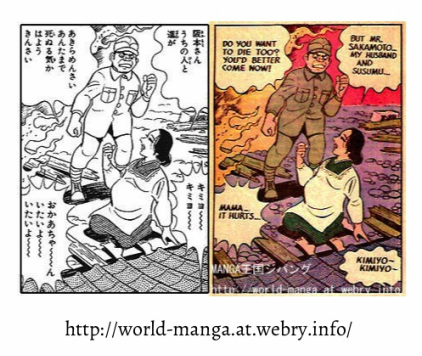

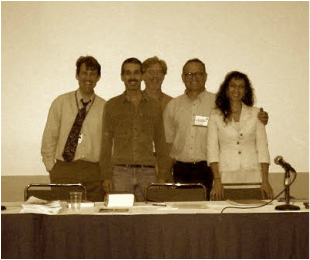
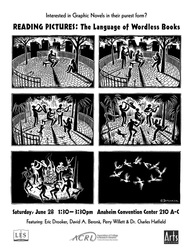
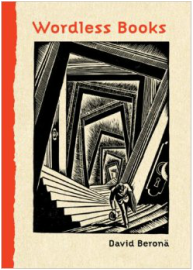

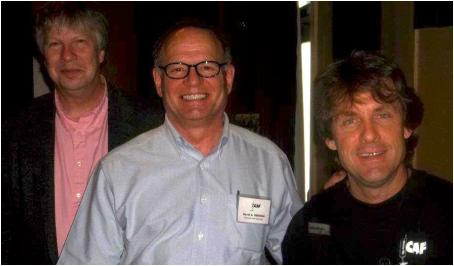
 RSS Feed
RSS Feed